#grifis
Text
Non abbandonare ciò che ami.
— Berserk
#berserk#guts#griffith#caska#manga#frasi manga#gabbiadicarta#anime#frasi anime#frasi berserk#frasi belle#frasi vere#grifis#frasi vita#frasi profonde#frasi tristi#frasi tristezza#frasi dolore#frasi sentimentali#frasi dolci#frasi tumblr#tumblr italia#citazioni#citazioni anime#citazioni manga#citazioni berserk#frasi adolescenza#frasi adolescenti#giappone#kentaro miura
78 notes
·
View notes
Text
Berserk
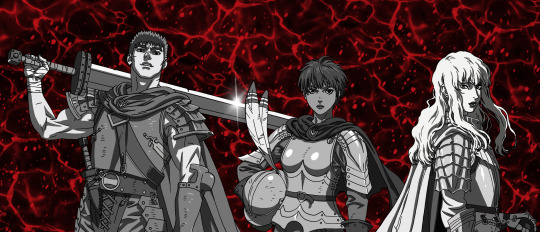

#berserk#fanart#fantasy#dark fantasy#berserk fanart#caska berserk#gatsu#grifis#griffith#caska#guts x casca#guts berserk#guts x griffith#grifis berserk#kentaro miura#miura#anime#manga
27 notes
·
View notes
Photo
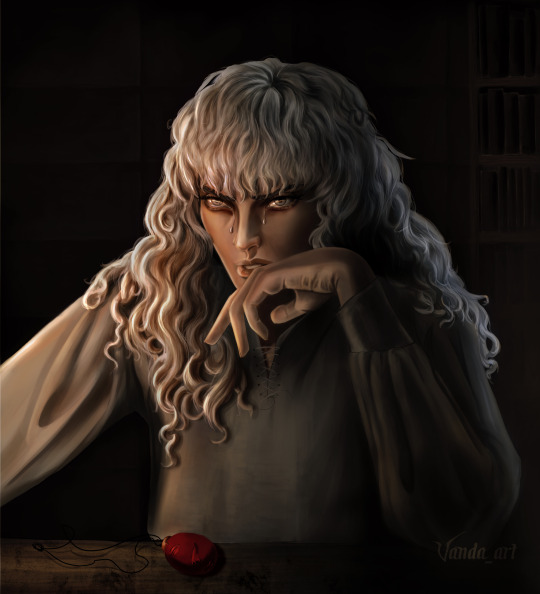
When Guts left
#berserk#griffth#grifis#guts berserk#guts#digital painting#digital art#digital illustration#illustration#art#artist
14 notes
·
View notes
Text


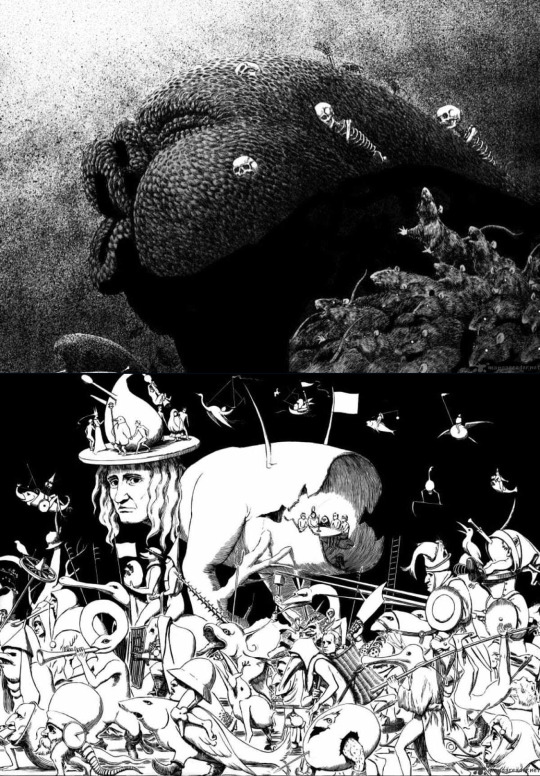
Some of my favorite panels of Berserk (pt2)
#comeseimportasse#citazioni#frasi#frasi trumblr#foto#berserk#berserk panel#caska#guts#griffith#kentaro miura#gatsu#grifis#manga
11 notes
·
View notes
Text
Il re falco
Piccolo capolavoro questa Fanart a tema Berserk

4 notes
·
View notes
Photo
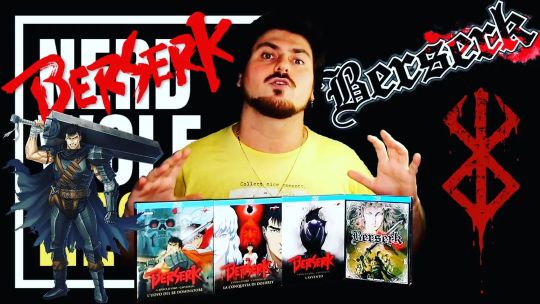
"BERSERK: LA SERIE" finalmente in Blu Ray!!! ☻️ Video unboxing completo sul canale YouTube + EXTRA "L'EPOCA DORO" trilogia 😵 Link in bio ✌🏻 #berserk #series #berserkgoldenage #miura #kentaromiura #bluray #bluraycollection #limited #limitededition #yamato #yamatovideo #eagle #eaglepictures #guts #gatsu #griffith #grifis https://www.instagram.com/p/CifH1ShMTG4/?igshid=NGJjMDIxMWI=
#berserk#series#berserkgoldenage#miura#kentaromiura#bluray#bluraycollection#limited#limitededition#yamato#yamatovideo#eagle#eaglepictures#guts#gatsu#griffith#grifis
0 notes
Text
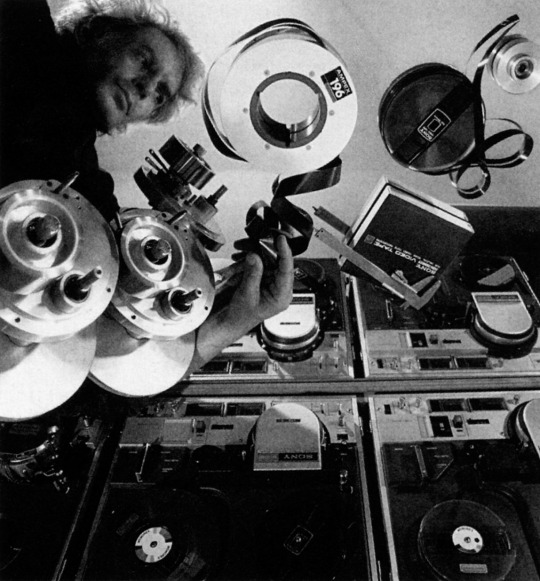
Alberto Grifi (May 29, 1938 – April 22, 2007)
#art#film#experimental cinema#photography#alberto grifi#associazione culturale alberto grifi#1930s#2000s
16 notes
·
View notes
Text
youtube
Verifica Incerta di Gianfranco Baruchello e Alberto Grifi, 1964
2 notes
·
View notes
Text
rega ma non è possibile dopo mille anni fate l'edizione deluxe stra figa alla dark horse e poi la traslitterazione dei nomi è ancora sminchiata così?
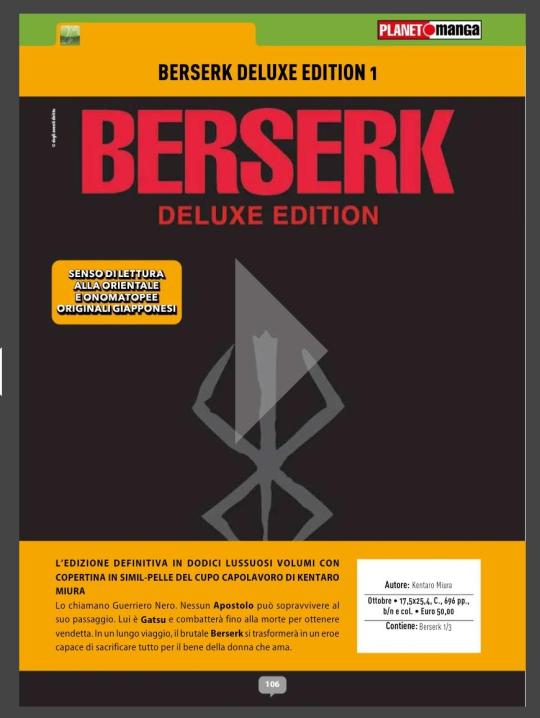
3 notes
·
View notes
Text
schegge di utopia. il cinema underground italiano. ritratto di alberto grifi / paolo brunatto. 2004
Schegge di utopia – L’underground Cinematografico Italiano questo sconosciuto – 12 Puntate di 45′ l’una – Ritratto di 12 autori:
Continue reading Untitled
youtube
View On WordPress
#Alberto Grifi#art#arte#cinema sperimentale#cinema underground#film#Paolo Brunatto#Schegge di utopia#video#Youtube
0 notes
Text
Grifis

20 notes
·
View notes
Text
youtube
Verifica incerta
Gianfranco Baruchelli Alberto Grifi
1964
0 notes
Text

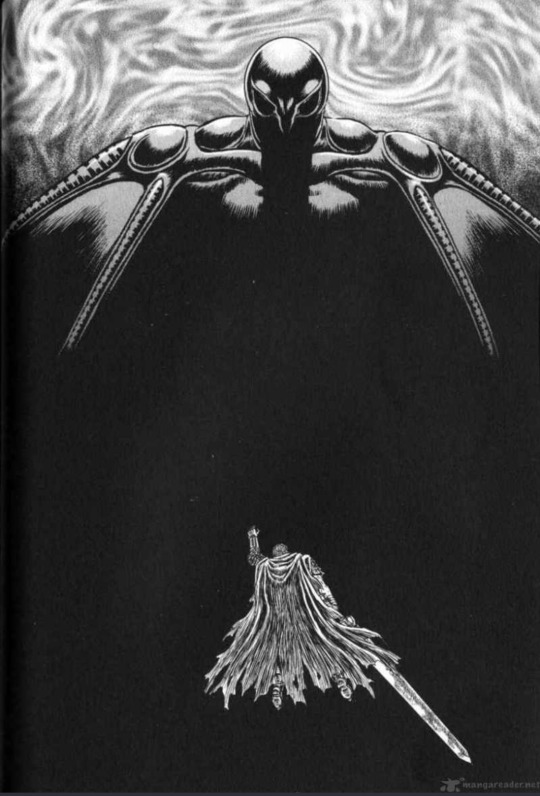

Some of my favorite panels of Berserk (part 1)
#comeseimportasse#frasi#citazioni#frasi trumblr#citazione tumblr#foto#manga#berserk#kentarou miura#black swordsman#guts#griffith#grifis#caska#gatsu#manga panel#panel#berserk panel
2 notes
·
View notes
Text
Fate / Up against your will / Through the thick and thin / He will wait until / You give yourself to him. Echo & the Bunnymen, The Killing Moon
These are dark tales of things that lurk deep within men… These stories would not please you. Dark Souls III
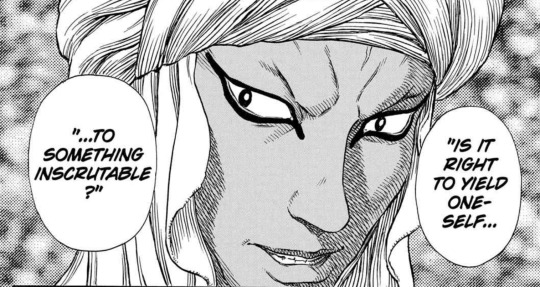
This is an aside from the series of meta analysis that I am writing about Berserk. I really didn’t expect to like this manga at first, let alone wanting so much to understand what I felt I wasn’t able to grasp behind the surface level. Years ago when I first approached it, I was actually quite unimpressed by the first chapter.
I should add: the first Italian edition was unfortunately flipped and I really disliked that choice back then. Some other series at that time (late 1990s) had started to be published in their original format and I didn’t find it difficult to adapt my reading habits to the original layout from right to left. Reversing the artwork in a manga like Berserk? I am sorry but that was criminal. Not only the characters would have their swords in their left hand but the mirror effect could seriously affect the energy of the line work and the overall harmony of the panels. Big scenes with a battle on horseback flipped? I couldn’t really get over it. Another manga, maybe? But Berserk? Art and composition are such a huge aspect of it, I didn’t love to have to compromise. The last two editions eventually came out with the original right to left flow, but also so much more expensive, it is a crime of another kind. So that is how I came to read the English version. Gatsu became Guts (I don’t know about that because now I think about the meaning of the word in English and I don’t particularly like it). Grifis became Griffith. Falcons became hawks.
So, I wasn’t impressed by the first chapter, definitely discouraged by the flipped artwork and annoyed by… Puck! I must say, I never really liked fantasy as a genre, especially because it uses creatures and I didn’t know what to make of this elf that contrasted so much in mood with the main character. I grew up reading a lot of novels that were considered classics in my culture and that was a great number of nineteenth century literary realism, French and Russian novels and Italian historical and realist novels from the nineteenth and the twentieth century. And literary realism was born from dissatisfaction with the irrational forces and themes of romantic and gothic narratives, aiming to look at the human experience directly and in an unfiltered way. I still prefer stories that are like that and the dark and gritty side of Berserk makes up for the fantasy aspects and what is more, Berserk seems to have the goal to criticize the irrational forces it represents rather than idealize them. And I am also quite comfortable when love is a thing but it isn’t framed under the romantic lens, that aren’t universal but quite culturally specific and distinctive.
Guts also wasn’t exactly an exciting main character for me at the beginning, it really was easy to mistake him for Kenshiro from Hokuto no Ken. Which I didn’t have anything against, that anime had such a good title track in its Italian adaptation, and the general desolate atmosphere was fascinating, although I watched it when I was too young to actually consider the story, I only remember the vibes. But I have never been into brooding, stoic and exaggeratedly burly men or 1980s action heroes. Reading further and I was very relieved that Guts wasn’t one of those.
Maybe Berserk wouldn’t have been back in my radar if it hadn’t been for the Souls games, new editions and anime adaptations coming out and in the end Miura’s own passing. So I started reading it again or for the first time in its digital version, completing it up to the current chapters. Reading it now that I am older definitely makes it easier to understand the scope of it and appreciate it. I think that Miura was definitely an ambitious man. His hands were exceptional, although I mourned the unpolished look of the paper and ink when he made the decision to move to digital drawing. Same hands but different surface, different way of absorbing the effort of those hands and the disappearance of the materials into numbers. There are volumes in the middle of Berserk that are just glorious for me, artistically, better than the first ones because the artist was practicing to the point of overworking and becoming incredibly good, better than the last volumes when he chose the hard support of the drawing tablet and the passages between lines and white could only be neater than what it used to be.
When analyzing it, one thing that I found impressive is how cohesive the story feels in its themes considering that it started in 1988 and that continues on under such unique circumstances: Miura and Mori’s relationship being fascinating in itself, in relation to the creation of Guts and Griffith’s dynamic. Berserk started to be published more than three decades ago. I want to point out how difficult can be to begin a story in your twenties, seeing it published monthly as you are likely working with only general ideas of where you want it to go and as you grow older. The editing was minimal. I would like to have more information on this point but I don’t think it was a big concern for a manga being published in Young Animal for Hakusensha of all places. As I often say in this blog, context matters and, although most people read and approach Berserk in its paperback or bunkobon format, all its chapters have been published first in a magazine that is primarily intended for young male readers attracted by photos of gravure idols on the cover and that expected to see erotic scenes, violence and maybe would also get into a story deeper and maintain the interest as long as those elements were there. Nothing wrong with that in my opinion, especially because many beloved novels that are considered classics were originally published periodically as well. And Miura’s approach to the erotic and violence doesn’t feel gratuitous when you think of the story in its entirety and complexities. In the history of art that I am familiar with the human body has always occupied such a central role and themes similar to those of Berserk are frequent and this is probably another big reason why my interest has been picked. It is familiar and not. I am careful about context! It’s manga, not chivalric romance, it’s a contemporary and commercial mixed form of art and not fresco paintings depicting stories on the walls of aristocratic houses, the author is Japanese and not oblivious to a great deal of European and western culture but is also much more immersed in his own culture and using the Japanese language. Kanji on a manga page or beside any drawing aren’t just words, but they are also synthesis of other images as well and images/sounds/concepts that add a lot to the art, most of it lost in a translation. And frankly, my major pet peeve is that the western fandom sometimes doesn’t really understand that the recognizable forms and themes of Christianity and heresies are seen and used from the outside and from a point of view that doesn’t ignore a whole lot of other religious traditions. And other religions have much more influence on certain themes presented in Berserk: suffering or rebirth mainly are two big themes at risk of being acritically absorbed from a Christological perspective that to me personally doesn’t feel right if we keep in mind the overall context of Berserk as a work of fiction and as a manga.
The only major edit that Miura was able to make when Berserk was published in volumes was the removal of chapter 83. If we consider the conditions in which Miura worked, for the first years it would have been very risky to even consider taking a hiatus, I would assume that he didn’t have much time to even make changes or adjustments in his work. But the removal of chapter 83 is interesting. Having been published in the magazine, even when it is missing from current publications, copies are around and available to see. That chapter, that comes before the Conviction arc, was removed because, rumors say, Miura thought it would have given away too much. I think that chapter 83 made Berserk’s Gnostic point of view too overt. Not surprising considering Miura took a lot of inspiration from Go Nagai’s particular brand of religious syncretism and that Gnosticism was frequently discussed in the 1970s and 1980s and probably still is.
I am not an expert on religious studies, I have a very superficial knowledge of just about anything related to religions. I am actually an atheist myself, if anything it is maybe easier for me to understand when an artist operates from an outside point of view rather than from inside a particular faith. Through art and music especially, and thorough words and practices used maybe carelessly, I am not completely ignorant of a plurality of religious beliefs. I might not approach the topic from a believer’s perspective nor for personal spiritual needs, but I am interested in it because of intellectual curiosity and interest in humanity. I don’t position myself above or below, just outside religion. I know I’ll never have enough time or intelligence to even know enough of a single interpretation of one major religious tradition, let alone severals. From a complete superficial perspective, I can only sense and try to understand Miura’s approach to those themes. I am able sometimes to recognize the sources and influences that colored his views on certain topics. I wouldn’t remember enough about Gnosticism from what little I studied in school many years ago, and I wouldn’t have any idea about the occult and many forms of religious syncretism if it wasn’t for having listened to a lot of rock music and being immersed into the popular culture that surrounded it, including manga. Same thing I can say about Nietzsche’s philosophy. I studied a little bit of German philosophy in high school, part of the standard curriculum, and I read on my own The Birth of Tragedy Out of the Spirit of Music when I was sixteen. Young Nietzsche, younger me. I can’t say I remember much besides the highlights of his philosophy. But then I became more and more intimate with David Bowie, his particular approach to music and art and how those things interact with society. Believe me or not, David Bowie is probably my favorite critic and commentator of Nietzsche, even when he didn’t do it through academic writing, but through his music, his own life and artistic outputs. And I love that. This is why I love Berserk too. Maybe because Bowie and Miura were artists whose work became vastly popular, they are easily misunderstood or considered to not belong in the same category of academic discourse about Nietschean philosophy, and just approached superficially, yet they were much more likely to discover the fallacies because they looked into it from a human experience, Bowie through himself and embodying his characters and Miura through drawing and voicing them. To me they actually managed to get rid of pedantic attitudes that keep people away from useful forms of philosophical criticism and learning. But it is entirely possible that I am just not smart enough and Miura’s moods and approach agree with my general worldview and I am indulging myself here.
Why am I writing all this? In part I am probably stalling. I keep postponing the moment I’ll have to write about the central theme that most fascinated me in Berserk, but it is also the more painful aspect: Griffith’s self delusion and the numerous other instances of illusions and mirages that humans don’t have the strength to resist. I haven’t even talked about Farnese or the Lost Children chapters for the same reason. It is daunting to put my thoughts into words intelligently and in a way comprehensible to others (hopefully). But that’s why I started this series of meta. And I am writing my analysis on tumblr because I rather be in the company of those appreciating and analyzing the queer and sentimental aspects of this manga, but I also think that the “romantic” element is a part of it but not exactly central to the story. I think that under those lenses alone the manga would just be quite imbalanced, bad and definitely tragic, less interesting or remarkable to me. Love is a major theme but I don’t think it’s developed through the romantic tradition intended as a cultural invention. When Miura drew and wrote about love, he wrote about the immense difficulty of it on many levels, including the familiar one, the lack or withholding of it from parental figures, the abuse of the spontaneous love of children, the fear of being vulnerable and connecting with others, the desire of intimacy and the dark side of it, the impulse to leave relationships and abandon people behind. I have the impression that through this story, I can see another side to my own experiences. Is society pushing young men to believe that they have to do everything alone, knowing that they can’t succeed, while is telling women that they can’t do anything by themselves, knowing that they won’t be welcomed? Why are we being bullied and forced apart, divided into bullshit categories and separate worlds when we would be better facing the hardships of life with as many allies as we are able to keep? Not alone and not exclusively through a romantic dimension or sexual favors or money deals. Why are we following blindly teachings that have already been proven false and so damaging? What price do we pay for not following the rules?
#berserk#berserk meta#general considerations about Miura’s art#background and other thoughts#eri reads berserk#manga analysis
11 notes
·
View notes




